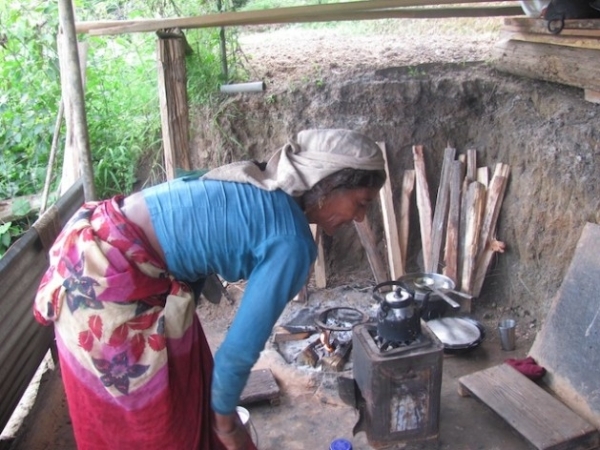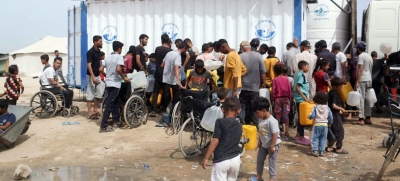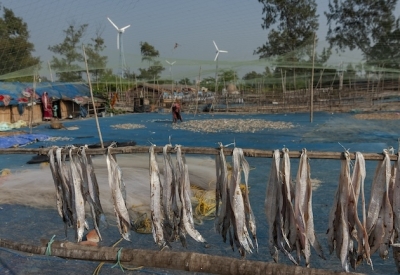Mar 13 (IPS) — One of the key efforts under the United Nations (UN) Sustainable Development Goals is to provide poor households with access to clean cooking technologies to replace, in particular, the burning of solid biomass (e.g., fuelwood and charcoal) in traditional open stoves that kills millions of women and children.
To date, one of the preferred options has involved the substitution of solid biomass with bottled liquefied petroleum gas (LPG). This approach, however, can be seen to run afoul of the climate change-driven opposition to fossil fuel use generally. However, LPG for clean cooking can and should be permitted as a transitional fuel to save lives in the short-term until we can provide universal access to alternative low-emissions clean cooking systems.
Africa is disproportionately burdened by a lack of access to clean cooking technologies, with over 60 percent of its population relying on biomass. That increases to over 85 percent in rural Africa. In Asia, over 45 percent of the rural population relies on biomass for cooking.
Enabling women to transition quickly from traditional cookstoves to cleaner technologies would save millions of lives, especially in poorer rural areas where biomass use is concentrated.
As report after report has documented, several million women and children die each year from the adverse impact of the very localized air pollution created by burning fuelwood and other solid biomass on open cookstoves (often used indoors without adequate ventilation).
Shifting away from unstainable harvesting and use of biomass would, in addition to avoiding these negative health impacts, generate important greenhouse gas mitigation and other environmental benefits.
There are a variety of clean cooking technologies that would address this issue. One solution is replacing biomass use with stoves fueled by LPG. Other alternatives include electric stoves and stoves that burn the biomass more efficiently.
Notably, electric stoves, when powered with renewable electricity, are near-zero emitting solutions. In contrast, even though LPG stoves potentially result in fewer greenhouse gas emissions than the traditional use of biomass, its promotion can be criticized as running counter to the climate change-related campaigns to eliminate all fossil fuel combustion and related emissions.
Efforts to phase out fossil fuels have gained momentum in the climate change discussions, as reflected in the discussion at COP 28 that targeted all forms of fossil fuels (i.e., coal, oil and gas), as compared to, for example, COP 26 which was focused on coal.
However, this broader and strengthened effort is occurring after many developing countries have already launched substantial clean cooking programs premised on the use of LPG. For instance, India introduced a program in 2013 to achieve universal access to LPG. Cameroon is executing a masterplan to increase the share of LPG for cooking from less than 20 percent to 58 percent by 2035.
Many of these programs attempt to target one of the problems with LPG, namely its affordability for poorer households. For example, Indonesia’s Zero Kero Program (a program initially targeting kerosene but then extended to solid biomass users) provides a free stove and first cylinder and subsidized LPG thereafter.
India’s flagship cooking energy program, Pradhan Mantri Ujjwala Yojana, launched in 2016 provides a subsidy and loan for the upfront cost of adopting an LPG connection and has resulted in an uptake by over 80 million households. Many ongoing LPG programs enjoy degrees of institutional momentum that would be difficult to replicate quickly if replaced by new efforts premised on a different choice of cooking technology.
Climate sustainability forces generally align with anti-poverty efforts such as the UN goal to achieve universal access to clean cooking, but the use of LPG presents tensions.
While shifting to LPG for cooking can generate the above-referenced health and other benefits for poor households currently relying on biomass, these same households are also amongst the most vulnerable to the negative impacts of climate change induced by fossil fuel emissions.
And in the context of the climate change campaigns to reduce emissions, it is arguably strategic to adopt straightforward and clear goals and communications, such as “phasing down/out fossil fuels”, rather than a nuanced message that targets “most but not all fossil fuels.”
Given this context – one in which the poor are adversely affected by biomass use but also by emissions-induced climate change – how should LPG cooking programs be treated?
In deciding which and whose emissions to prioritize in the effort to advance global climate goals, and specifically how to address emissions from LPG-based cooking, it is useful to place the discussion and choices in the broader emissions inequality context.
As pointed out by a recent Oxfam report on the topic, the poorest 50 percent of the world’s population (which includes those households currently relying on biomass) are responsible for a mere 8 percent of greenhouse emissions, a figure that would be marginally affected by the adoption of LPG. In contrast, the wealthiest 10 percent is responsible for 50 percent, and the top 50 percent for 92 percent.
Moreover, the use of fossil fuels for cooking is something that manifests itself at all income levels. For example, the US government has just issued regulations that tighten efficiency requirements for gas stoves, thereby also, implicitly, legitimizing their continued use for years to come.
The consumers targeted by the US regulations fall within the top 10 percent richest of the world’s population, while the women using unhealthy traditional cookstoves fall within the world’s poorest segment.
Given the lives of poor women and children that can be saved today by LPG-based cooking, coupled with the minute per capita emissions of these consumers, LPG-based efforts should continue and potentially even be expanded under a ‘transitional regime, with the focus of emissions-reduction activities in the near-term targeted at the activities of the world’s richest top 10 percent responsible for 50 percent of global emissions.
Importantly, this transitional regime would include a sunset provision on the use of LPG with a clear second transition to renewables-based electric and other non-emitting cooking solutions. The primary objective is to save lives that would otherwise be lost to cooking-related pollution in the short to medium term, while also supporting net-zero emissions over the longer run.
LPG has a productive role to play in poverty-alleviation efforts and specifically the UN’s goal of achieving universal access to clean cooking. However, the use of LPG for cooking is a strategy which, given its attendant carbon dioxide emissions, should be structured as transitional pending the fuller deployment of low-emissions clean cooking alternatives.
Philippe Benoit is the managing director at Global Infrastructure Advisory Services 2050. He previously held management positions at the World Bank and the International Energy Agency.
Kaushik Deb leads the India Program at the Center on Global Energy Policy at the School of International and Public Affairs in Columbia University.






